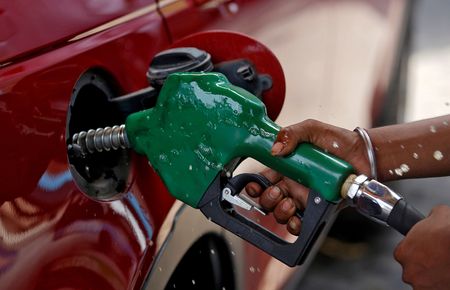
By Shariq Khan
BENGALURU (Reuters) -Oil prices settled more than 1% lower on Tuesday after the United States said it would boost supply in the market by releasing more crude from its Strategic Petroleum Reserve.
On Monday, the U.S. Department of Energy (DOE) said it would sell 26 million barrels of oil from the SPR, already at its lowest level since 1983.
The U.S. Department of Energy (DOE) had considered canceling the annual sale after U.S. President Joe Biden’s administration last year sold a record 180 million barrels from the reserve to combat sky-high fuel prices. But that would have required Congress to act to change its mandate.
Brent futures for April delivery fell $1.03, or 1.2%, to $85.58 a barrel by 1:05 p.m. EST (1805 GMT). U.S. West Texas Intermediate crude futures for March fell by $1.08, or 1.4%, to $79.06 a barrel.
Both benchmarks sank more than $2 during the session, but pared losses after data showed the slowest pace of acceleration in the U.S consumer price index since late 2021. Analysts said the data would likely keep the Federal Reserve on a moderate interest rate hiking path.
“Interest rates are now at a point where every 25 basis points matter and could be the difference between a soft landing and a recession,” OANDA analyst Craig Erlam said in a note.
Oil prices also pared losses after the Organization of the Petroleum Exporting Countries raised its 2023 oil demand forecast by 100,000 barrels per day in a monthly report, citing the reopening of the Chinese economy after COVID restrictions.
“OPEC’s monthly oil market report yielded some cautious optimism,” said Kpler analyst Matt Smith. He added that oil prices remained lower as the markets entered a risk-off sentiment.
Also easing supply concerns, the U.S. Energy Information Administration said on Monday it expected record March production from the seven biggest U.S. shale basins.
U.S. crude and product inventories were expected to have grown last week, a Reuters poll showed, ahead of industry data due at 4:30 p.m. ET (2130 GMT), followed by the EIA’s report on Wednesday. [EIA/S]
(Reporting by Shariq KhanAdditional reporting by Shadia Nasralla and Sudarshan VaradhanEditing by Marguerita Choy, David Goodman and David Gregorio)

